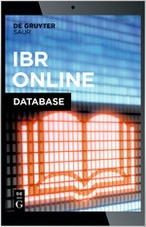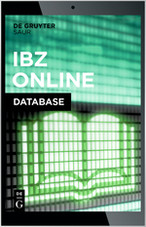- 08 December 2017
Article/Publication Details
Views: 3994
LIFE AND THE REDUCTION TO THE LIFE-WORLD
| Title in the language of publication: | LIFE AND THE REDUCTION TO THE LIFE-WORLD |
| Author: | James Mensch |
| Issue: |
HORIZON. Studies in Phenomenology. Vol. 6, №2 (2017), 13-29 |
| Language: | English |
| Document type: | Research Article |
| DOI : 10.21638/2226-5260-2017-6-2-13-29 | PDF (Downloads: 3090) |
Abstract
Husserl’s Crisis contains his final attempt to understand the world in terms of an ultimately constituting consciousness.
The path he chooses is that of a reduction to the “life-world,” the world that appears when we bracket the results of the objective sciences.
His claim is that “the ‘objective’ a priori [of the natural sciences] is grounded in the ‘subjective-relative’ a priori of the lifeworld”.
It is from the latter that he attempts to achieve his vision of “a universal, ultimately functioning subjectivity”.
In this article, I question whether this is possible. If the world were the product of this functioning subjectivity, the latter could not be part of the world.
But, the inherent sense of the reduction to the life-world leaves us with the sensuous embodied subject, who is a part of the world. How can we think of the a priori in terms of this subject?
I conclude by considering both Merleau-Ponty’s and Patočka’s attempts to conceive of such an a priori.
Key words
Life-world, subjectivity, a priori, Husserl, Merleau-Ponty, Patočka, Hans Jonas.
References
- Barbaras, R. (2003). L’ambiguïté de la chair, Merleau-Ponty entre philosophie transcendentale et ontologie de la vie. Chiasmi International, 1, 183-189.
- Barbaras, R. (2011a). La vie de la manifestation. In La vie lacunaire (139-159). Paris: J. Vrin.
- Barbaras, R. (2011b). L’ouverture du monde, lecture de Jan Patočka. Lonrai: l’Editions de la Transparence.
- Barbaras, R. (2013). L’Autonomie de l’apparaître. Chiasmi International, 15, 27-36.
- Darwin, C. (1967). The Origin of the Species. In The Origin of the Species and the Descent of Man. New York: Modern Library, Random House.
- Descartes, R. (1990). Meditations on First Philosophy. New York: Macmillan.
- Dillon, M.C. (2004). Merleau-Ponty and the Reversibility Thesis. In D. Moran & L. Embree (Eds.), Phenomenology, Critical Concepts in Philosophy, 2 (294-315). New York: Routledge.
- Husserl, E. (1921). Ms. E III 2.
- Husserl, E. (1970). The Crisis of the European Sciences and Transcendental Phenomenology. An Introduction. Evanston: Northwestern University Press.
- Husserl, E. (1976). Ideen zu einer reinen Phänomenologie und phänomenologischen Philosophie, Erstes Buch. Den Haag: Martinus Nijhoff.
- Husserl, E. (1962). Die Krisis der Europäischen Wissenschaften und die transzendentale Phänomenologie. Den Haag: Martinus Nijhoff.
- Jonas, H. (1966). Mortality and Morality: A Search for the Good after Auschwitz. Evanston, Illinois: Northwestern University Press.
- Levinas, I. (1969). Totality and Infinity. An Essay on Exteriority. Pittsburgh: Duquesne University Press.
- Merleau-Ponty. M. (1962). Chair du monde — Chair du corps — Être, May 1960. In Le visibile et l’invisible (302-304). Paris: Gallimard.
- Merleau-Ponty, M. (1964). L’Oeil et l’esprit. Paris: Galimard.
- Merleau-Ponty, M. (1968). The Visible and the Invisibles. Evanston, Illinois: Northwestern University Press.
- Patočka, J. (1988). Le monde naturel et le mouvement de l’existence humaine. Dordrecht: Kluwer Academic Publishers, 1988.
- Patočka, J. (1990). Nachwort des Autors zur tschechischen Neuausgabe. In K. Nellen & J. Němec (Eds.), Die natürliche Welt als philosophisches Problem (181-267). Vienna: Klett-Cotta.
- Patočka, J. (1991). Der Subjektivismus der Husserlschen und die Möglichkeit einer ‘asubjektiven’ Phänomenologie. In K. Nellen, J. Nemic & I. Srubar (Eds.), Die Bewegung der menschlichen Existenz (267-285). Stuttgart: Klett-Cotta.
- Patočka, J. (1995a). Corps, possibilités, monde, champ d’apparation. In Papiers Phénomenologiques (117-130). Grenoble: Jérôme Millon.
- Patočka, J. (1995b). Phénomenologie et ontologie du Mouvement. In Papiers Phénomenologiques (29-52). Grenoble: Jérôme Millon.
- Patočka, J. (2000). Epoché und Reduktion in den „Fünf Vorlesungen“. In H. Blaschek-Hahn & K. Novotny (Eds.), Vom Erscheinen als solchem: Texte aus dem Nachlaß (275-276). Freiburg/München: Karl Alber.
- Patočka, J. (2002). Plato and Europe. Stanford: Stanford University Press.
- Toadvine, T. (2012). The Chiasm. In S. Luft & S. Overgaard (Eds.), The Routledge Companion to Phenomenology (335-347). New York: Routledge.

This work is licensed under a Creative Commons Attribution-NonCommercial 4.0 International License.

|
|
|
|
|

|
|
|
|
|

|
|
|
|
|
|
|
|
|
|
|
|
|
|
|
|
|
|
|
|
|
|

|
|
|
|
|
|
|
|
|
|
|
|
|
|
|
|
|
|
|
|
|
|
|
|
|
|
|
|

|

|
Social networks:





